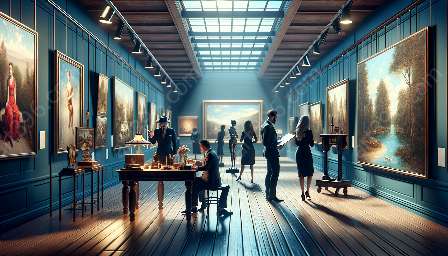Artists have long been at the forefront of embracing new technologies to enhance and promote their work. With the rise of digital platforms and social media, artists are leveraging technology in unprecedented ways to anticipate and respond to critiques. This interaction with technology is not only shaping the relationship between artists and critics but also impacting how art is critiqued and analyzed.
Impact of Technology on Art Criticism
Technology has significantly altered the landscape of art criticism by facilitating a more immediate and direct exchange of feedback between artists and audiences. Historically, art critics have held the power to shape the narrative around an artist's work. However, with the advent of digital communication tools, artists now have the ability to engage directly with their audience, preempting and addressing critiques in real-time.
Furthermore, the democratization of online platforms has enabled a wider range of voices to participate in art criticism. Social media, blogs, and online forums have provided platforms for individuals to share their opinions and critiques of artwork, challenging traditional hierarchies within the art world.
Strategic Use of Technology by Artists
Artists are using technology in strategic ways to anticipate and respond to critiques. For instance, some artists engage in virtual studio visits, allowing critics and audiences to experience their work in a digital environment. Additionally, digital tools such as virtual reality and 3D modeling are being employed to provide immersive experiences that enable critics to engage with artwork in unprecedented ways.
Moreover, artists are utilizing social media to directly communicate with their audience and gain valuable insights into public reactions to their work. By monitoring and responding to feedback on platforms like Instagram and Twitter, artists can adapt their approach and address critiques as they arise, ultimately shaping the discourse around their art.
Enhancing Collaboration and Dialogue
Technology has also fostered new opportunities for collaboration and dialogue between artists and critics. Online platforms and digital forums provide spaces for constructive conversations, allowing for a more dynamic and inclusive approach to art criticism. Critiques are no longer confined to printed publications or exclusive art circles, but are now accessible to a global audience, thus amplifying the impact of critique on artistic practice.
Conclusion
In conclusion, the integration of technology into the artistic process has fundamentally transformed the dynamics between artists and critics. It has empowered artists to engage with their audience in new ways, anticipate and respond to critiques in real-time, and participate in a more diverse and inclusive art criticism landscape. As technology continues to evolve, its impact on the relationship between artists and critics will undoubtedly shape the future of art criticism and the broader art world.

